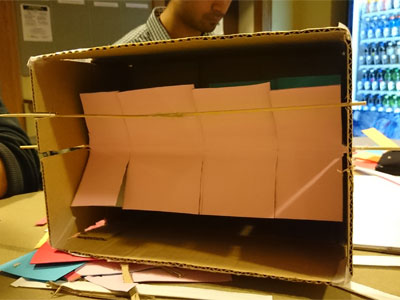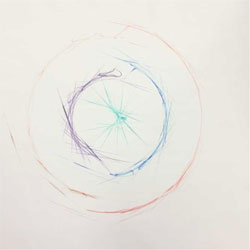OBJECTIVE
Time management is daunting and stress-inducing. There are utilities and applications all geared towards helping us be more efficient and effective, but what about trying to make time management more delightful?
We set out to understand how people manage their time in order to find the right insights to drive a design that could change how we view and relate to time.
SO TO BEGIN...
OUT IN THE FIELD...
The first subject I interviewed for this project was a professor with the University of Michigan School of Information. She carried with her, in her office, three time-management artifacts: Post-It Notes arranged on a whiteboard on her wall, Google Calendar in her computer, and a notebook containing to-do items arranged in a chronological manner. Her main tool of choice was her notebook; the calendar existed primarily for coordinating scheudles with colleageus and students, and the Post-It Notes on her whiteboard was more or less her analog Bit Planner.
My second subject was an administrative assistant, whose habits were similar to the first subject's: while she didn't have a whiteboard of Post-It Notes, she did rely on Google Calendar for coordination and a chronological to-do list for her own personal scheduling and tracking.
When we compiled our interview and observtion notes, it became clear that something like the Bit Planner wouldn't really address anything.
ROUND TWO
The idea here would be to have stackable, modular split-flap rows; each active row represents an item in the user's cloud-hosted calendar and to-do list. Marking a to-do item as complete or completeing a calendar event would trigger the column of split-flaps to cascade down by one row. It was sound, and both our contextual inquiry and investigative research substantiated the intent.
Except we were four grad students working on a semester-long project armed with a single Arduino. We couldn't really build out a funcioning prototype, but we did have a key insight to act upon.
BACK TO THE DRAWING BOARD
So we knew what we were aiming to address and we had a grasp of what our technical limitations were. What if we relied primarily on the visual aspect of our premise: what if we built something that would create abstract representations of a person's calendar?
So we thought about other ways to represent time. After sketching out various ideas, we came to a consensus: we could prototype an interactive installation where a set of pendulums, cooresponding to the days in a week, are raised to heights calculated from how busy a person's calendar is, draw upon a rotating canvas. Every individual has different schedules, and therefore every individual would get different results. We could give people a way to interact with and relate to their schedules in a manner that had less to do with time and more to do with perception.
WE CAN BUILD IT!
Well, kinda.
Our prototype in the end was more of a proof of concept: that having pendulums draw on a spinning canvas was an interesting (and, apparently for some, cathartic) experience. What we built involved pendulums with embedded felt-tip markers that had to be manually raised and released; mounted on a PVC A-frame, they were positoned above a rotating base that a sheet of paper would be clipped to.


